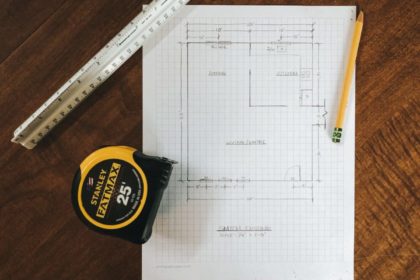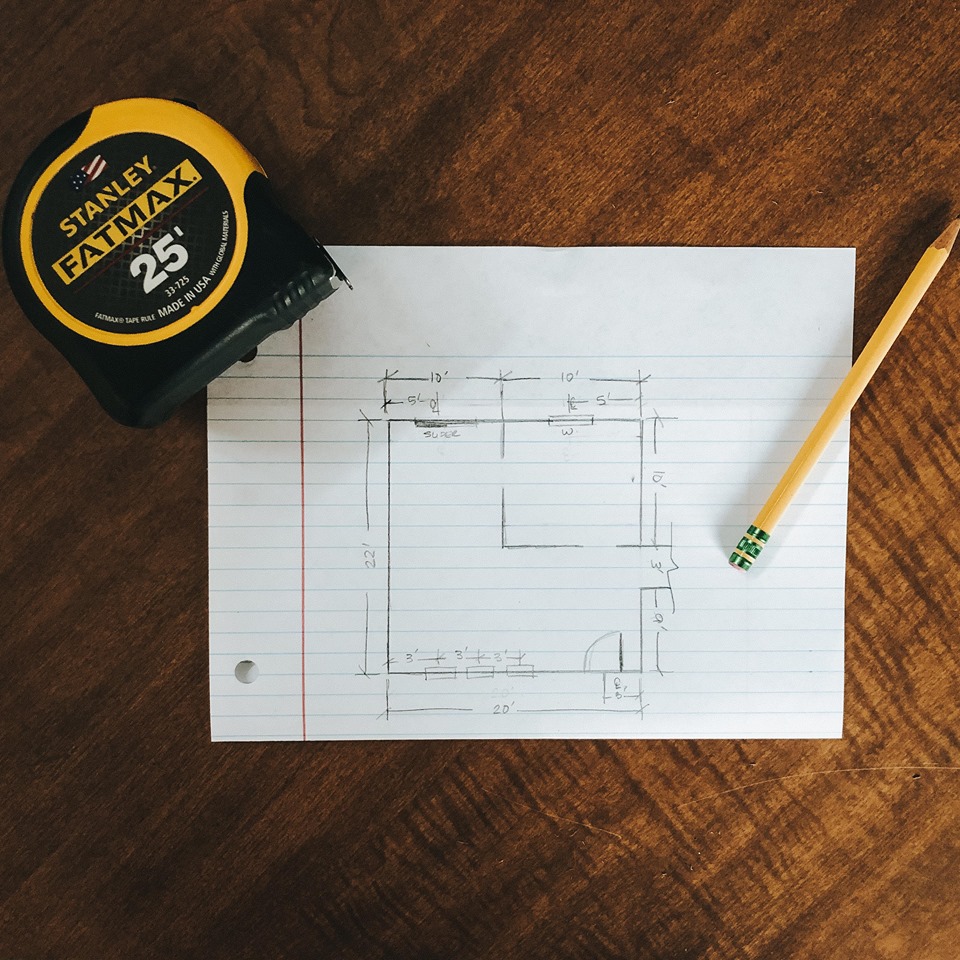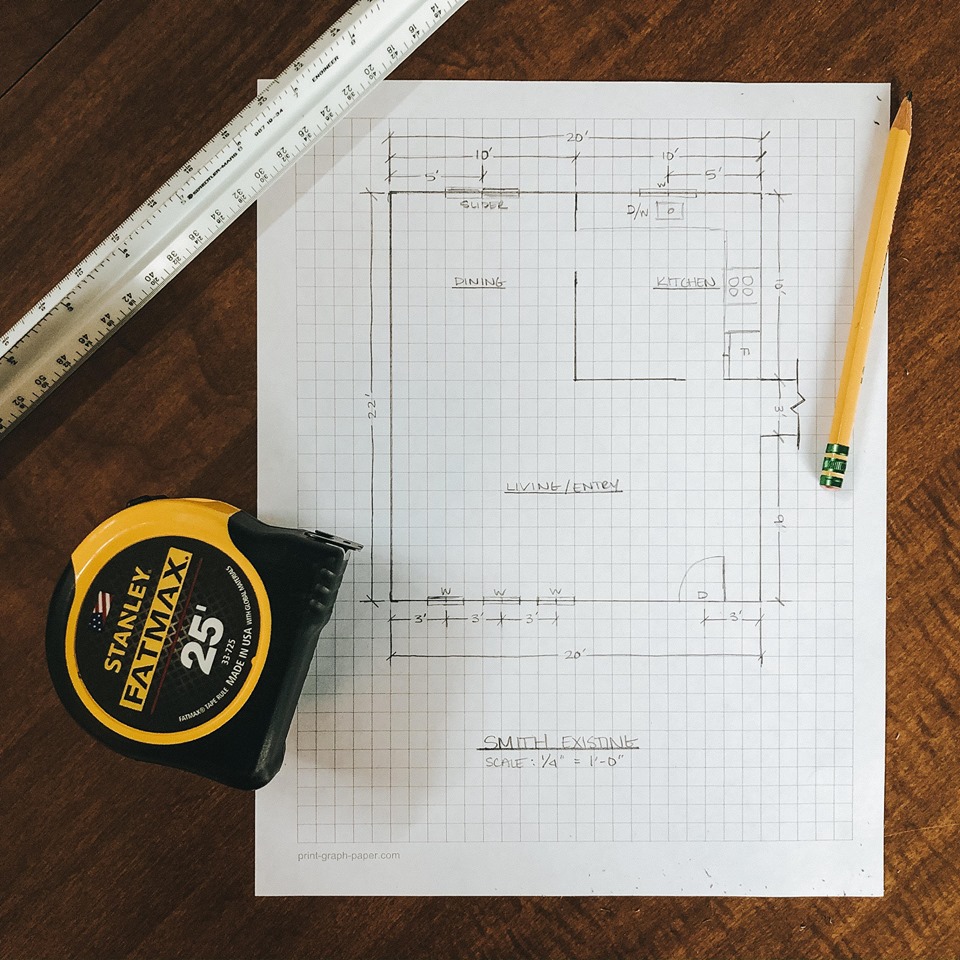
Did you catch our big announcement? We are now offering virtual consultation and design meetings to continue serving our clients amidst the current COVID-19 outbreak. If you missed this announcement, head to the blog post to read all about it.
Since our initial meetings are now virtual, we will need you, our wonderful clients, to provide us with a simple floor plan of your space. This will allow us to deliver you with an accurate budget estimate and scope of work – which will save YOU money in the end. We hope this post helps you understand what a floor plan is, why it is important, and gives you confidence to draw one out on your own!
What is a Floor Plan?
A floor plan is a scaled drawing of a room or building viewed from above. Floor plans often include room dimensions, appliance locations, cabinet locations, and whatever else is necessary to communicate what is currently (or what will be) in your space.
How to Draw a Floor Plan?
- Take Measurements. The first step to creating a floor plan is to measure your space. You may want another person for this step to hold the tape measure in large areas to ensure an accurate measurement. I suggest roughly sketching out your space, including doors and windows, and then add your measurements as you go.

- Transfer your Measurements. Once you have everything measured, it’s time to create a to-scale floor plan. If you have an engineering scale handy and you know how to use it, that can be very helpful but it isn’t necessary! You can use a regular ruler or ¼” graph paper. Most floor plans are drawn at a quarter-inch scale, which means one-quarter inch on paper is equal to one foot in real life, or ¼” = 1’-0”. If you have ¼” graph paper, you can use the boxes as your guide! Just remember one box is 1’-0”, so half of a box is 6”, etc.Use the sketch you used to take measurements to count out the boxes on the grid paper and layout your space.

- Add Architectural Features. Now that you have your walls drawn to scale, it’s time to add doors, windows, and any other architectural features. This is also when you should add in appliances and built-in features, such as your dishwasher, dryer, showers, toilets, sinks, cabinets, etc.
You did it!! Congratulations! Of course, if you have any questions while you are creating your floor plan, we are happy to assist you over the phone or via a Zoom call. Once you are finished, please email us your floor plan as well as a few photos of your space and any areas you believe would be helpful for us to see. We hope this helps and we cannot wait to assist you with your upcoming renovation!